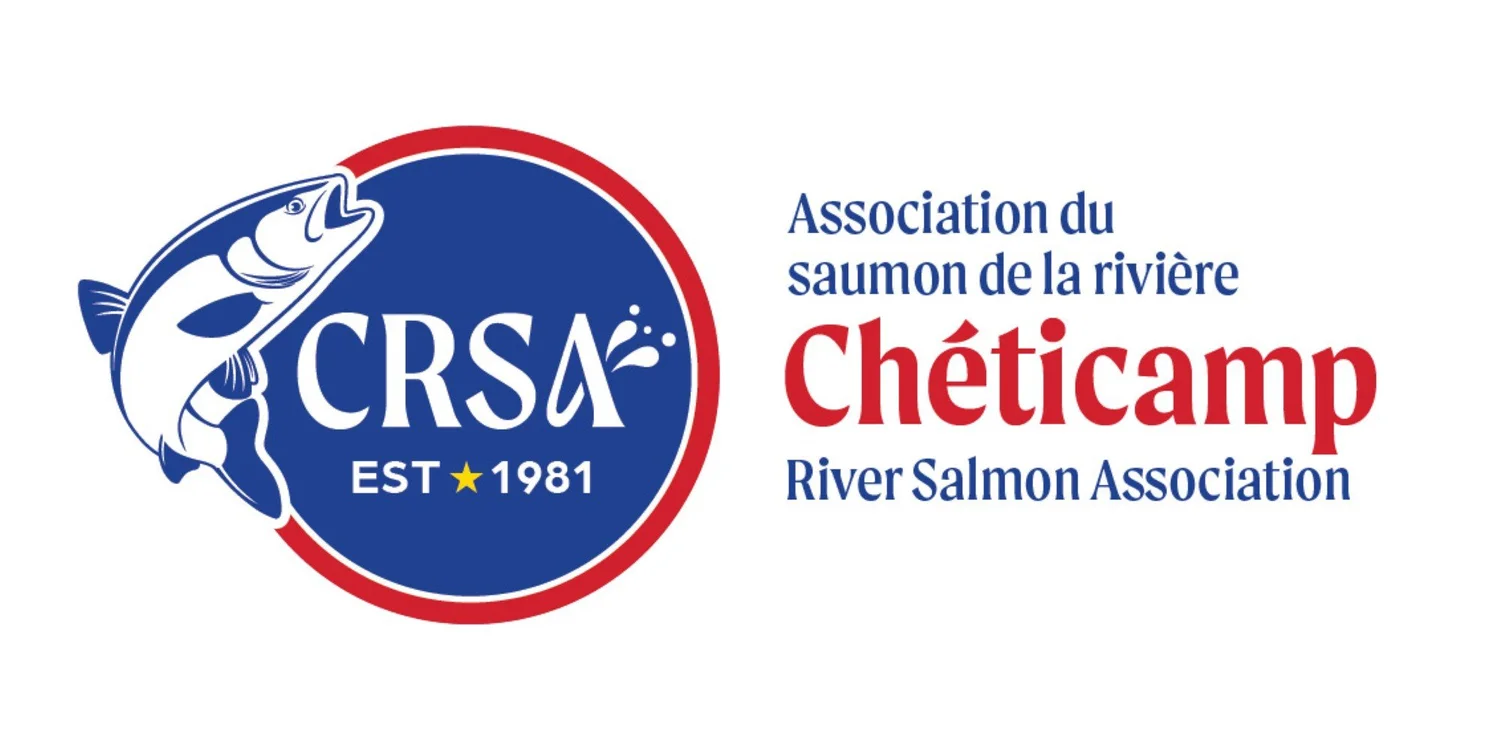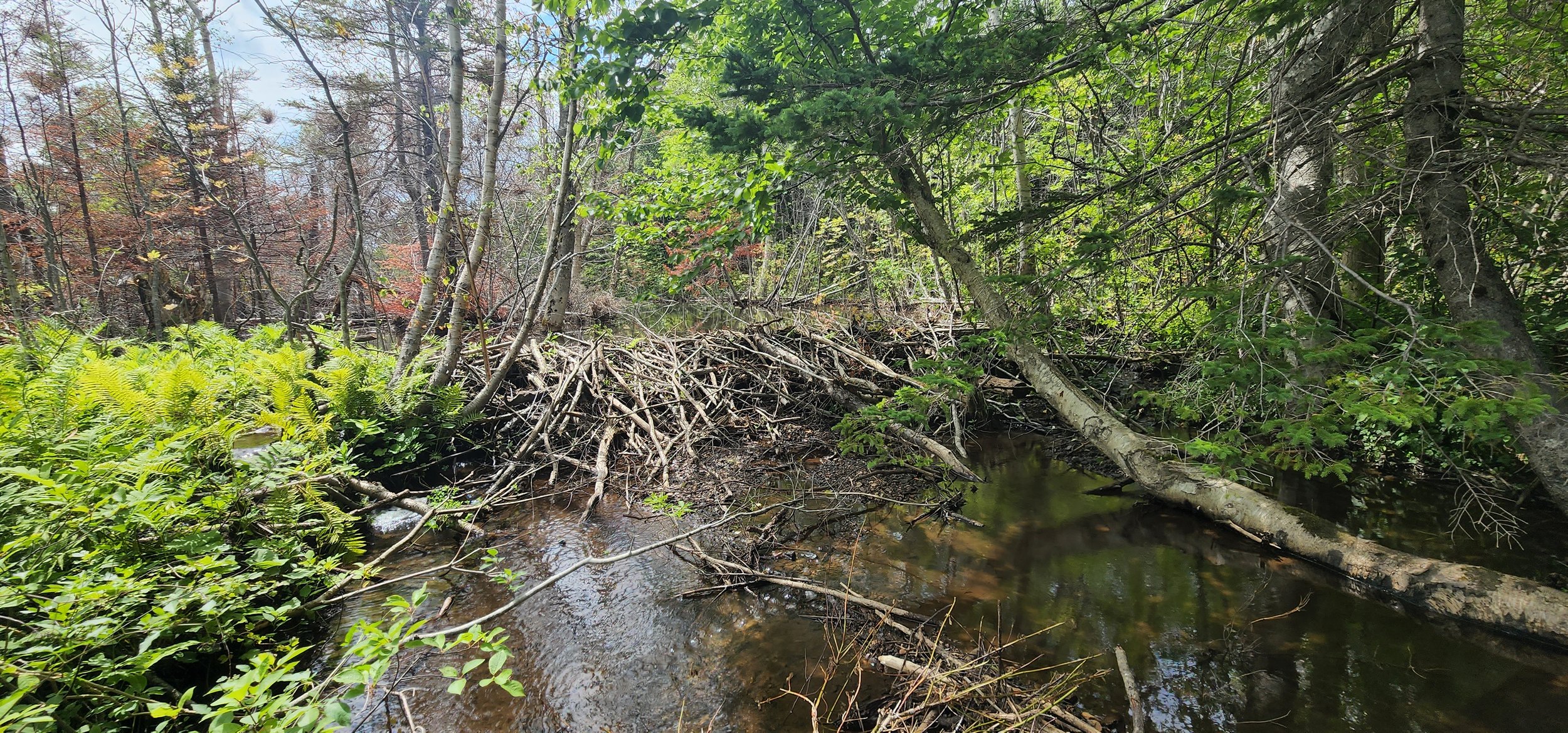Summary of Work (July 25th - August 5th)
The last couple of weeks have been busy for the Cheticamp River Salmon Association’s summer work crew, but we finally have some office time and we’re eager to share a little update.
One of the tasks assigned the CRSA student crew was surveying a stretch of the Cheticamp River below the Cabot Trail bridge. In particular, the CRSA’s crew surveyed the top couple hundred metres of the right channel split just downstream of the bridge. This is a location where the CRSA is hoping to carry out instream work to maintain and improve fish passage during periods of low flow and elevated water temperatures.
The crew checked depths, widths, and took elevations at seven sites starting at the top of the right channel split, with a distance of 25 meters between sites. The depths and channel widths were obtained with a measuring tape and a meter stick, and an automatic laser level, tripod, and staff were used for elevations. Spencer held the staff while Aaron looked used the laser level to record the elevation data.
Spencer holding the leveling staff for Aaron to get elevations with the laser level.
Nick Macinnis with the Nova Scotia Salmon Association’s Adopt-a-Stream Program also visited Cheticamp last week to meet with the CRSA. As part of his visit, Nick used a drone to obtain aerial photos and video of both completed and future worksites on a couple of the CRSA’s priority watercourses.
In addition to the drone work, Nick also spent some time on Farm Brook, helping the CRSA to layout a plan for installing a series of digger logs in the lower section of the brook. The CRSA plans to install these structures later this summer to help enhance and create pools on Farm Brook, as well as to develop a proper pool/riffle sequence.
The CRSA is able to complete the planning work involving the Cheticamp River and the instream work on Farm Brook this year thanks in big part to continued support from the Atlantic Salmon Conservation Foundation and the Nova Scotia Salmon Association’s Adopt-a-Stream Program. By each contributing $12,000 to the CRSA’s 2022 projects, the ASCF and AAS Program have enabled the CRSA to push forward with its important habitat restoration, monitoring, and watershed planning work.
Nick holding the measuring tape for the measurements for a digger log on Farm Brook.
Spencer and Nick getting the drone set up to fly across Farm Brook.
One of the aerial photographs Nick captured of the lower Cheticamp River.
In addition to work on the rivers, the Cheticamp River Salmon Association also recently hosted its annual fly casting workshops. On Wednesday July 27th, CRSA’s President Rene Aucoin and Master Casting Instructor Lewis Hinks led an introductory casting workshop. The CRSA’s student crew joined six other participants for a fun day of learning to cast, set up and care for fly fishing equipment, tie knots, and even tie flies. The workshops even included a target competition involving pylons and hoops for participants to practice their newly acquired skills.
Rene and Lewis introducing the fly casting workshop.
Spencer and Aaron fly casting.
Rene showing workshop participants how to make a fly with feathers.
Rene teaching a workshop participant how to use the vice to tie a fly.
After practicing fly casting, Spencer and Aaron were back to the river. This time, the crew headed up the Cheticamp River to install the final temperature logger of the summer. This final logger was installed at a cold-water source at Third Pool.
Aaron and Spencer arriving at Third Pool.
Third Pool of Cheticamp River.
In addition to the work on the Cheticamp River, Aaron and Spencer have been spending a considerable amount of time this summer on Aucoin Brook. Recently, the crew has been systematically walking sections of the brook, recording information on everything from instream structures and blockages, to bank erosion and other habitat issues. The information that is being collected is being used to update a fish habitat restoration plan for the Aucoin Brook subwatershed.
One of the beaver dams that Spencer and Aaron came across on Aucoin Brook.
The CRSA crew also took some time this past week to carry out maintenance at the barrier-free fishing platform at Petit Lac. Specifically, Spencer and Aaron cleared out some vegetation that was causing the parking lot to feel overgrown, and also re-installed one of the lines to mark an accessible parking space at the fishing platform.
Before taking out vegetation.
After taking out vegetation.
Every year, the CRSA also provides assistance to the Gulf Aquarium and Marine Station Cooperative (GAMS) with their Community Aquatic Monitoring Program (CAMP) work. CAMP was developed as a way to involve community groups in monitoring the health of estuaries and bays in their local watersheds. Here in Cheticamp, GAMS has been involved with CAMP for 12 years. The monitoring work involves using a 30 meter seine net to collect aquatic species at specified sites. The specimens that are collected are then identified and counted, with all the data recorded as part of the long-term monitoring work.
Using the seine net to gather fish, shrimp, and crabs.
Local families joined the CRSA and GAMS at the first monitoring site to help with counting fish and separating the invasive green crabs from the rest of the specimens.
Spencer and Abdul from GAMS helping Gretchen to identify and count fish.

















